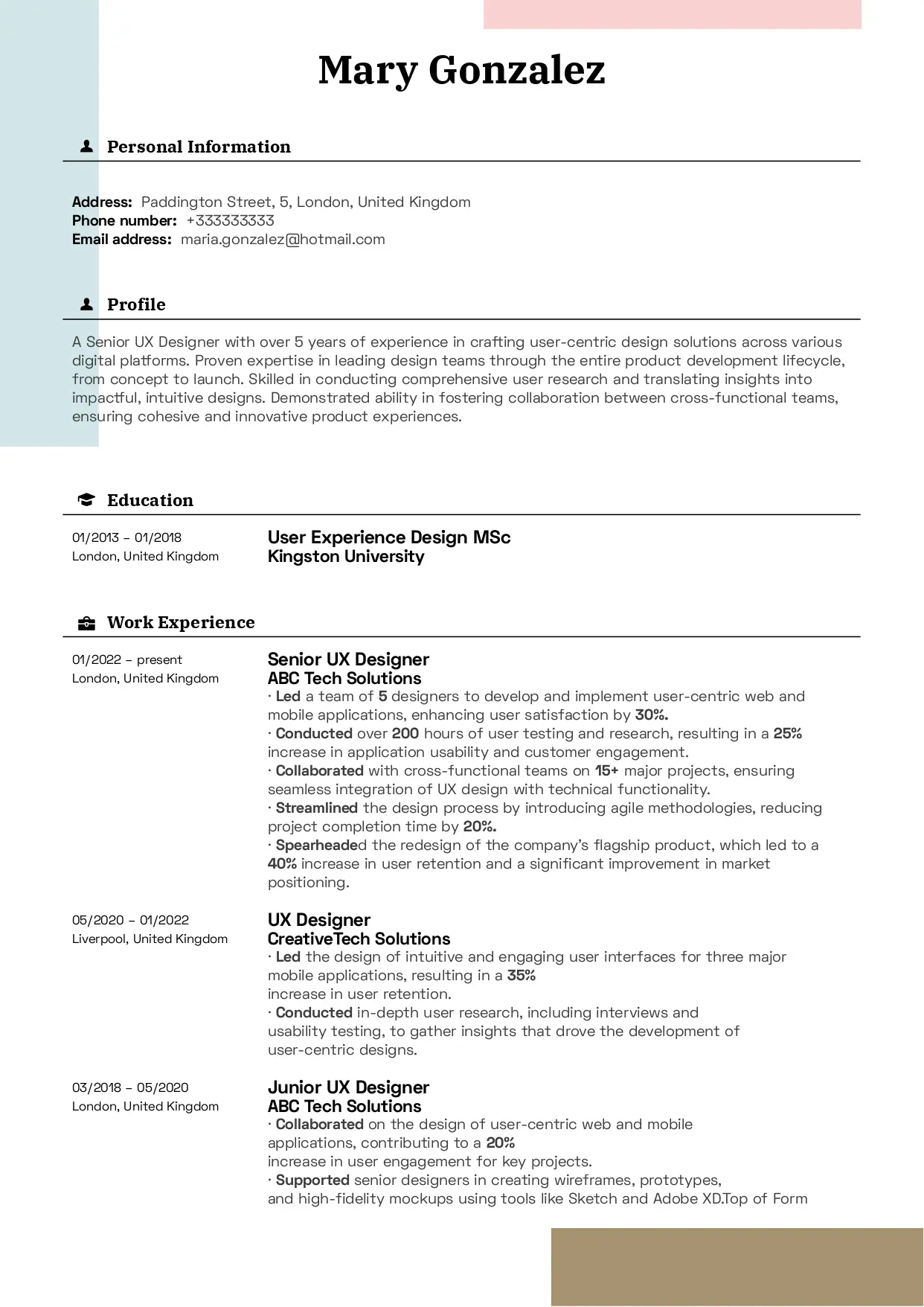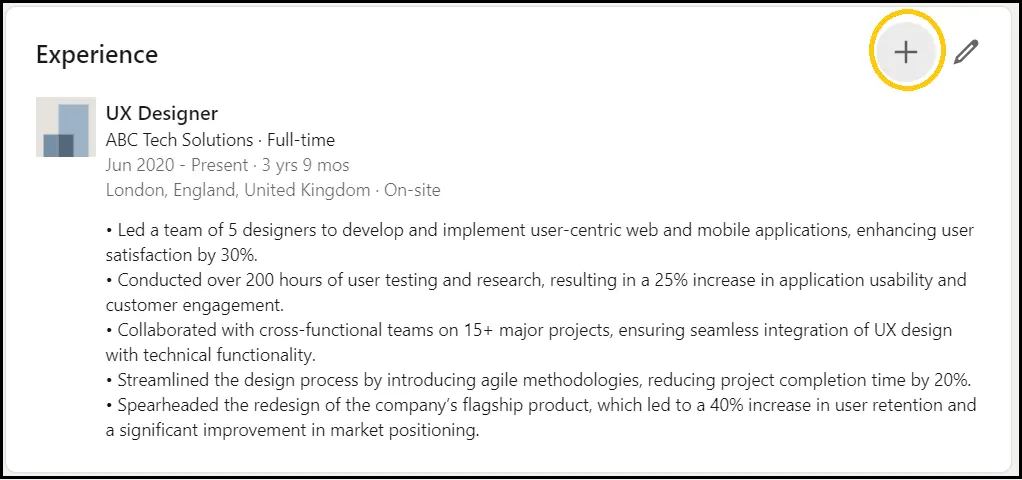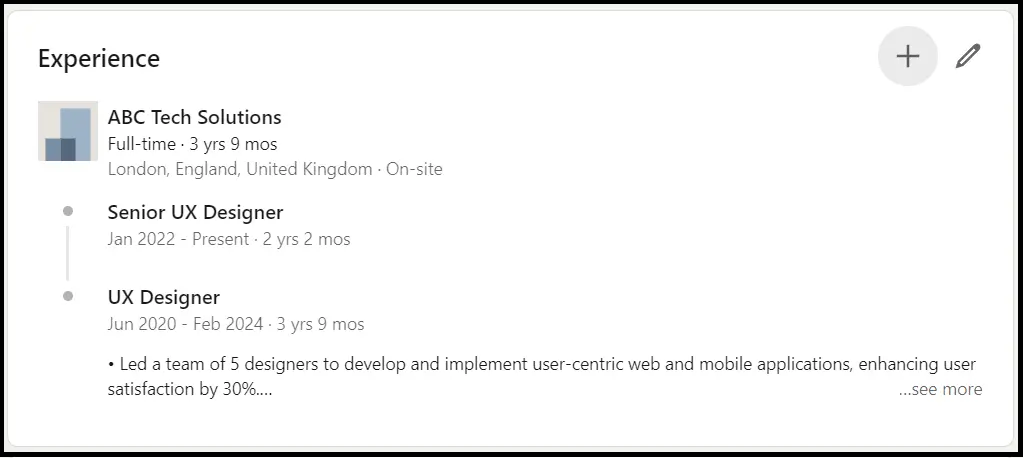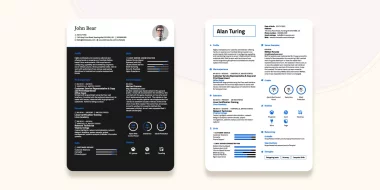Fingers crossed, there may come a point in your career when you'll have to figure out how to show promotion on resume.
Who doesn't love a promotion? Those who receive it certainly do. Do you know who else? The recruiters.
Promotions serve as concrete evidence of your professional growth, exceptional performance, and the trust you've earned from previous employers.
However, not all promotions are the same. And, accordingly, there isn't just one correct way of showing promotion on resume.
Read on and find out:
- Why you should show promotion on your resume;
- Where on your resume you should mention promotion;
- How to show promotion on resume;
- How to show promotion on LinkedIn;
- Examples.
Let's dive right into it!
Why you should show promotion on your resume
Are you hesitant about including promotions on your resume?
Maybe you think that showing off your promotions would be too braggy and you don't want to seem arrogant.
Or maybe you think that it would take up too much of your precious resume space.
Whatever the case may be, you'd be very wrong to leave any promotion out.
Here is why you should always showcase promotion on your resume:
- Promotions reflect your career growth. And demonstrating career growth puts your ability to learn and pick up new skills into the spotlight. The ability to take on bigger responsibilities and manage more complex projects are key to succeeding in any industry.
- Promotions communicate your dedication to a company. Showing your career progression within the same company is a great way to let the recruiters know that you have the consistency and stability to remain with them for an extended period of time. Which they love coz it's cost-efficient.
- Promotions show that your work has been impactful. Show your potential employers that your hard work, skills, and especially results, have been noticed and awarded. This can also set you apart from other applicants who may have a similar level of experience but lack evidence of upward mobility.
In a nutshell, including promotions on your resume can effectively convey your potential value to your future employers.
And in the current competitive market, this detail can make or break your chances of landing the job of your dreams.
Where on your resume should you show promotion?
A straightforward question deserves a straightforward answer.
Show you promotion in either:
- Work experience section (best option) OR
- Resume summary
Without a doubt, the work experience section is the best of the resume sections to highlight your promotion. This makes the most sense, since promotions are inevitably linked to particular job positions.
There are more ways you can use the work experience section to highlight your promotion, which we discuss in the following chapter.
However, it isn't the only place where you can drop this information.
If your promotion is something you're particularly proud of, you can also highlight it in your resume summary.
You can show your promotion in resume summary like so:
Resume summary with promotion example:
Additionally, you can also make a note of your promotion in your cover letter.
How to show promotion on resume (3 cases)
As we've already mentioned, there isn't just one way of presenting your promotions.
Below, we've outlined 3 possible cases and explained in detail how to show promotion on resume in each case.
- You'd been promoted to similar positions in the same company
- Junior UX Designer > UX Designer > Senior UX Designer
- You'd been promoted to positions in different departments/teams in the same company
- Content Marketing Exec > UX Designer
- You'd been promoted in different companies
- Junior UX Designer in company A > UX Designer in company B > Senior UX designer in company A
#1 Case – You'd been promoted to similar positions in the same company
Let's say you've been working in the same company for the last five years. You started out as a Junior UX Designer. Then, you'd been promoted to UX Designer. After additional two years, you've been promoted again – to a Senior UX Designer.
Your career move took place within the same department and within the same company.
What's changed?
- Your responsibilities haven't changed fundamentally.
- However, now you bear greater responsibility for the performance of the UX division as a whole.
- Plus, you're now in charge of more complex projects and lead a team of your own.
How to show promotion in this case?
If you've been promoted to positions with the same or similar competencies (within the same company!), you can showcase your progress by stacking all your job positions under one work experience entry.
Here's how to do that:
- State the name of the employer once.
- Stack job titles and respective dates of employment. Start with the most recent position, under the company's name.
- Summarize responsibilities and achievements. Here, you should focus primarily on the achievements and responsibilities pertaining to your latest position.
- Highlight the promotion. Finally, make a note of your promotion by indicating it directly in your descriptions and specify the reason or achievement that led to your promotion.
Here's an example of the stacking format:
Case #2 – You'd been promoted to positions in different departments/teams in the same company
In this case, you've been working in the same company for the last five years. Throughout this time, you've held job positions in different departments. At first, you worked as a Content Marketing Executive.
What's changed?
- Your responsibilities and competencies have changed significantly. In fact, you've undergone a complete career switch.
- Your new job position requires different skills and qualifications than the one before.
However, you still want to show that you're capable of learning and expanding into new job positions if needed. Plus, the job posting you're about to apply to calls for a candidate with experience in both UX design AND Content Marketing.
How to show promotion in this case?
In case you've got experience working within the same company but in positions with different competencies, create separate job entries under the same company heading.
Here's how to do that:
- State the name of the employer once.
- Create a separate entry for you most recent position with respective dates.
- Showcase your most impactful accomplishments and key responsibilities – but only those pertaining to this particular job title!
- Create another separate entry for the position you'd held before the promotion with respective dates.
- Showcase your most impactful accomplishments and key responsibilities – this time only those pertaining to the job position you'd held before the promotion.
- (Optional) If you've switched careers within the same company and the on top of that you were promoted in the new position, highlight the promotion.
Here's an example of multiple job entries under one company heading:
#3 Case – You'd been promoted in different companies
Let's set the scene for the last case. You'd worked in company A as a Junior UX Designer for only 2 years. Then, you quit and landed a job in company B as a UX Designer. After two more years, you've returned into company A, but this time as a Senior UX Designer.
What's changed?
- Your competencies and duties haven't changed significantly.
- You now bear greater responsibility for the performance of the UX division as a whole.
- Plus, you're now in charge of more complex projects and lead a team of your own.
However, this career advancement happened across two different companies.
How to show promotion in this case?
Although this may seem as the most complicated situation out of the three, it can also be resolved by a very simple solution.
But, you'll need to list the same company twice. Here's how:
- Make a separate work experience entry for company A: Include the employer's name, location, your most recent job title and dates of employment. Then, proceed to mark your most relevant accomplishments in bullet points.
- Make a separate work experience entry for company B: Once again, state all relevant information about company B together with bullet points describing your competences.
- Make a separate work experience entry for company A: Here, you have to repeat all the employer's information. Describe the competencies and achievements pertaining to this particular job position.
On your resume, listing the same company twice can look like this:
Promotion in two different companies example:
How to show promotion on resume example
Let's have a look at how to show promotion on a (kind of) real resume. We know that sometimes one picture is worth more than heaps of text.
A fictional job seeker, Mary, had quite the career journey! She got promoted in two different companies.
She dedicated a separate work experience entry to each of these job titles.
Promotion on resume example:

What makes this resume example so good?
- She includes the basic information about her former employers: name of the company, location, job title, and the dates.
- Uses bullet points documenting her most impactful achievements and competencies under each entry.
- Uses action verbs and quantifiers where possible.
How to show promotion on LinkedIn
Now that you know how to show promotion on resume, let's take a look at how to add promotion on LinkedIn profile in 7 simple steps:
- Go to your LinkedIn profile and scroll down to your Experience section.
- Click on the + icon next to your current job position. This will trigger a pop-up window.

- Click on Add position.

- Fill in information about your new job title.
- If you want to share your promotion with your network, switch the Notify network bar to On (the button will turn green).

- Before clicking Save, tick the End current position as of now box. This will automatically add an end date on your former job experience entry. Finally, save your changes.

- If you were promoted to a new job position within the same company, LinkedIn will add your new position under the same company's heading.

Key takeaways: How to show promotion on resume (and LinkedIn)
To conclude, knowing how to show promotion in resume is crucial if you want to have that competitive edge over your fellow job applicants.
Promotions demonstrate your career growth, adaptability, and the recognition you've received for your performance. Moreover, they highlight your ability to handle increased responsibilities and complex projects. All of this makes you more desirable in the eyes of the recruiters.
The three most common ways of showing promotion in resume include:
- Stacking your job titles underneath one company heading. This approach is especially useful if you've been promoted to a position with similar/the same responsibilities and competencies within the same company.
- Creating separate job title entries under one company heading. Use this strategy if you've been promoted to a position with very different responsibilities within the same company. Each job title entry is accompanied by their own bullet points.
- Listing the same company twice. When you left company A for company B, but later returned to company A to take a higher position.








